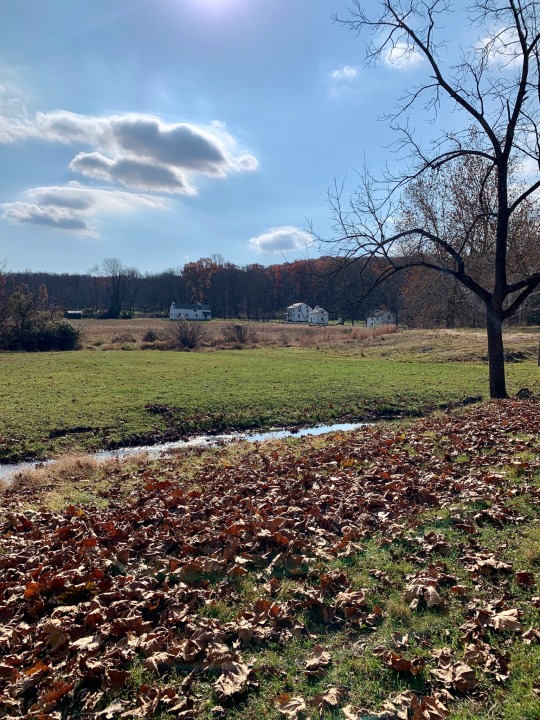#hopewell furnace
Explore tagged Tumblr posts
Text

#pennsylvania#hopewell#hopewell furnace#historic village#field#country#fall#autumn#autumncore#cottagecore#naturecore#cozy cottage#gardencore#plantcore#nature#nature photography
17 notes
·
View notes
Text

Hopewell Furnace
Discovering more history in the Pennsylvania area. Iron plantation from the 19th century.
#Photographers on tumblr#photographer on tumblr#history#colonial history#travel photography#pennsylvania#furnace#east coast#philadelphia#united states#photography#landscape photography#snow#snow day#hopewell furnace#architecture photography#historic buildings#historic house#historic towns
10 notes
·
View notes
Photo

The Hopewell Furnace - 1877 by Yuri Chuchmay
215 notes
·
View notes
Text

The Hopewell Furnace - 1877 by Yuri Chuchmay
7 notes
·
View notes
Text
Hopewell Furnace National Historic Site in Pine Swamp, Pennsylvania
http://dlvr.it/SkxZ9Q
0 notes
Photo

Hopewell Furnace National Historic Site in Pine Swamp, Pennsylvania The northeastern United States does not leap to mind when iron mining is mentioned. However, small-scale iron mining in this area was common from colonial times up into the 19th century. Many of the operations could be even considered a cottage industry, with iron being extracted for local use by an individual blacksmith. Hopewell Furnace, by contrast, was a large operation, a so-called "iron plantation" almost at a proto-industrial scale. It was active from 1771 through 1883 and furnished iron for both the Revolutionary War and the American Civil War. Its heart consisted of a furnace around 32 feet high and 22 feet square that had a cross-section something like an arrowhead pointing up. The furnace was charged with iron ore, charcoal, and limestone from the upper "point" end. Air was blown in near the base of the furnace, at first by large bellows and later by a piston system driven by a water wheel. With this airflow, the temperatures in the wide middle of the furnace reached around 3,000°F, at which point the reactions to produce molten iron could proceed. The limestone also reacted with any impurities in the ore to produce molten slag, basically glass. The liquids would fall and collect at the bottom of the furnace. Molten slag and molten iron act like oil and water, with the slag floating on top of the iron, so they can be drawn off separately. The slag was discarded, while the iron was drained out into molds. In the early years cast iron objects were made, iron stoves in particular. By the time the operation shut down, however, raw ingots of so-called "pig iron" were the only product, as casting iron objects was no longer competitive. The furnace was run 24 hours a day except for a maintenance shut-down about once a year. Iron was typically drawn off twice a day, about a ton at a time—a substantial output in those days. The iron ore was high quality, obtained from metamorphic rocks in the area. Indeed, some of these deposits were worked until the 1970s. Limestone was also abundant locally. The charcoal was made from the local hardwood forests by means of charcoal kilns at the site. In the 1840s, the operation tried making coke from anthracite as an alternative, but that experiment foundered due to poor design and high transportation costs. Hopewell Furnace finally shut down completely in 1883, as it could not compete with the large-scale consolidation of iron mining and smelting made possible by rail transportation of both raw materials and finished products. Charcoal had also become an obsolete technology, with newer operations using coke made from coal. https://www.atlasobscura.com/places/hopewell-furnace-national-historic-site
0 notes
Text
also from missouri we got Lone Tree and Hopewell Furnace. I’m probably gonna change it to Hopewell Cokeworks and slap a bunch of ivy on it
gonna start a list of ghost town names that i want to name street names after in the normal school, everyone help me think of street suffixes. so far we got Possum Trot, Missouri and Bloodland, Missouri. also an honorable mention to Nodaway County, Missouri
27 notes
·
View notes
Text








This is my favorite place to be in the fall
#hopewell furnace#Pennsylvania#fall#autumn#woods#meadows#rivers#historic#nature#landscape#photography#plants#p
106 notes
·
View notes
Photo

the view from the hill
#farm#farmcore#farmlove#farmland#farmlands#hopewell furnace#national park#national parks#nature photography#landscape#springtime#spring#cottagecore
41 notes
·
View notes
Text

Hopewell Furnace, November 2023
#hopewell#Hopewell furnace#pennsylvania#pasture#November#fall#fence#naturecore#cottagecore#cozy cottage#gardencore#plantcore#nature#nature landscape#nature photography#historic site
9 notes
·
View notes
Text

Hopewell Furnace
Melting snow
#photographers on tumblr#united states#east coast#travel photography#landscape photography#architecture photography#history#pennsylvania#philadelphia#colonial history#landscape#photographer#american history#hopewell furnace#hopewell#snow#snow day#winter#canon#canon photography#hiking#nature hikes#hiking trail#farm#farmers#travel photographer#architecture
1 note
·
View note
Video
youtube
THE HOPEWELL FURNACE-COFFIN NOTICE PT. II
1 note
·
View note
Text

#whatnot#original content#my photo#photography#pennsylvania#history#Hopewell furnace National historic park#nps
0 notes
Text
gotta be the hottest person to get accidentally whacked in the face with an apple by their father at the hopewell furnace national historical site
36 notes
·
View notes
Note
Off-topic, not sure if you have said this before. Have you been to any historic sites? (doesn't have to be from the 18th century if you prefer another) Any favorites?
The only historic sites in America that I’ve ever gotten to visit are Hopewell Furnace (🤷♀️) and Harper’s Ferry (the same Harper’s Ferry that was raided by John Brown whose body lies a-moulderin’). I’d love to visit some AmRev sites!
But when I was studying in Oxford (ugh, bougie!), I got to go to Trafalgar Square, Westminster Abbey, Warwick Castle, and the old Hampton Court Palace! Of course I was all over the city of Oxfordshire itself: was in and out of multiple Oxford colleges, not to mention the Bodleian Library …
3 notes
·
View notes
Photo

Charcoal iron plantation in Pennsylvania
This is the traditional method of making charcoal and the same method used at Hopewell Furnace since 1771.
8 notes
·
View notes